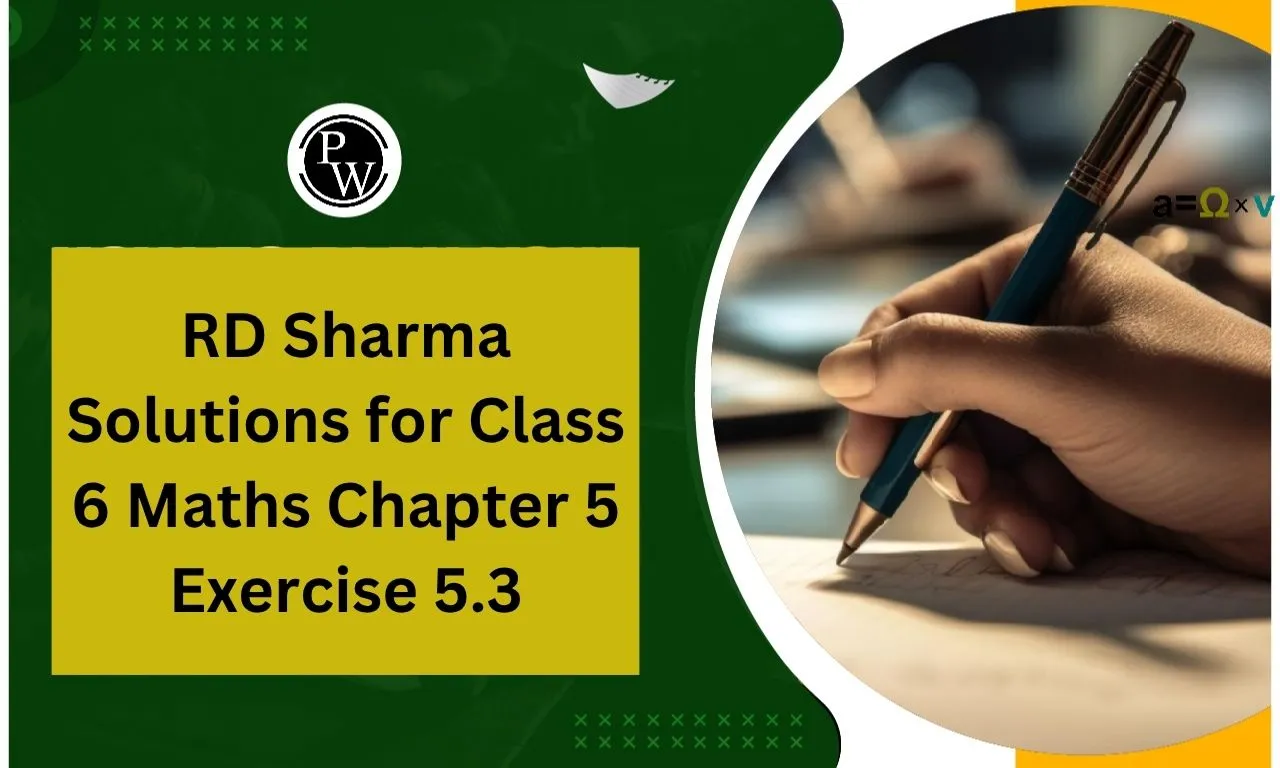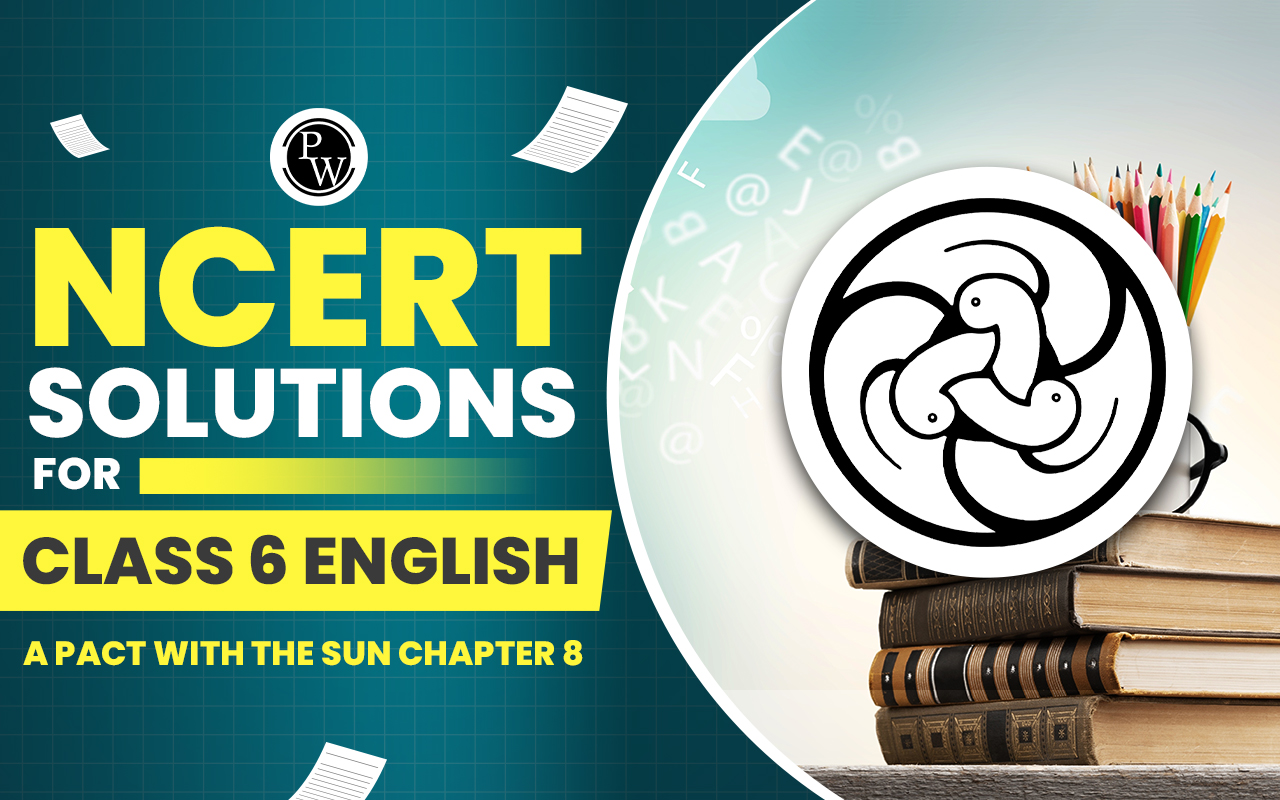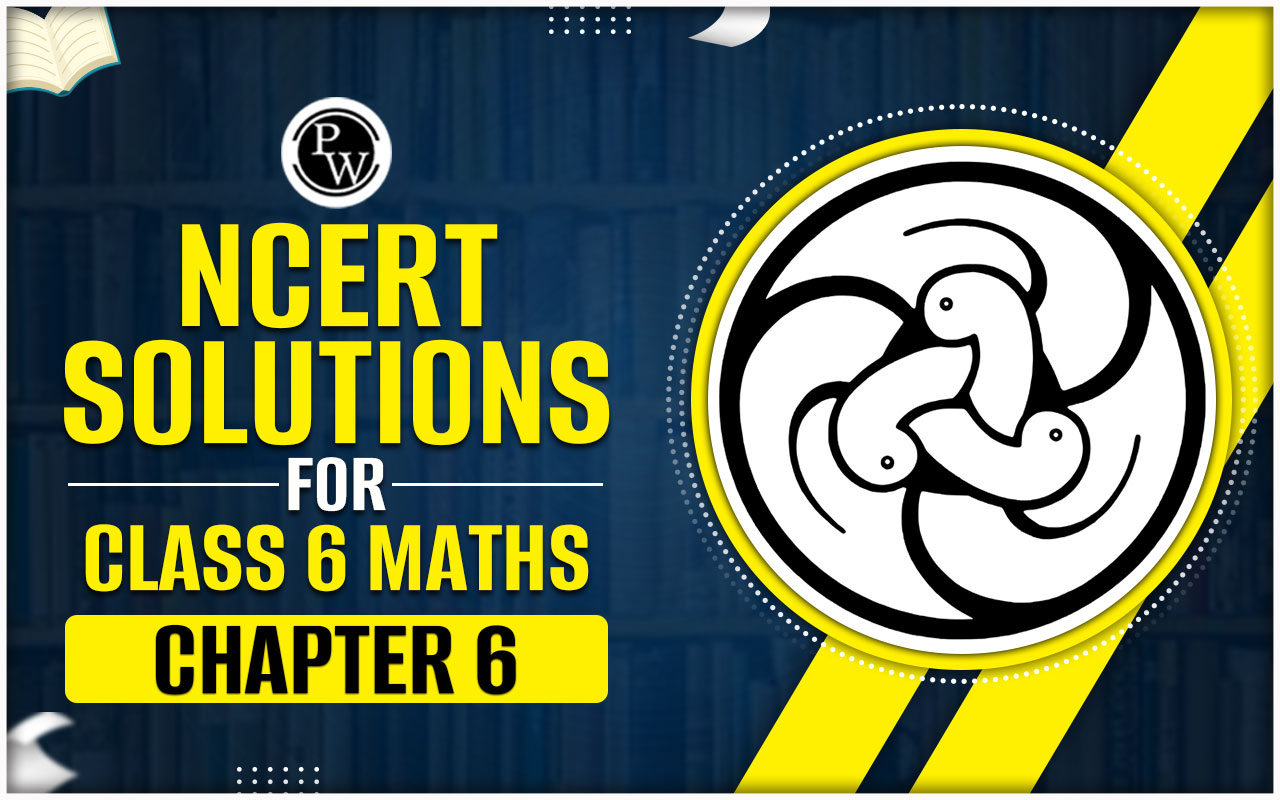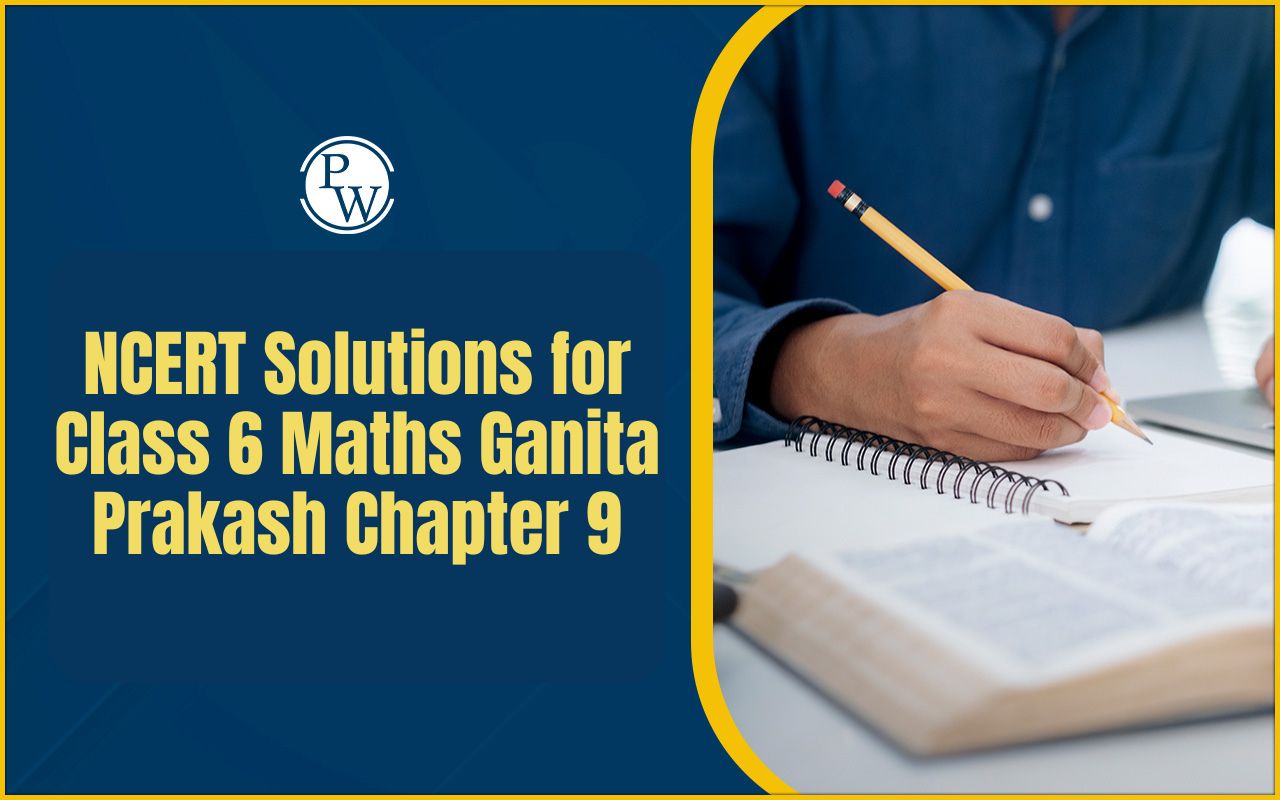
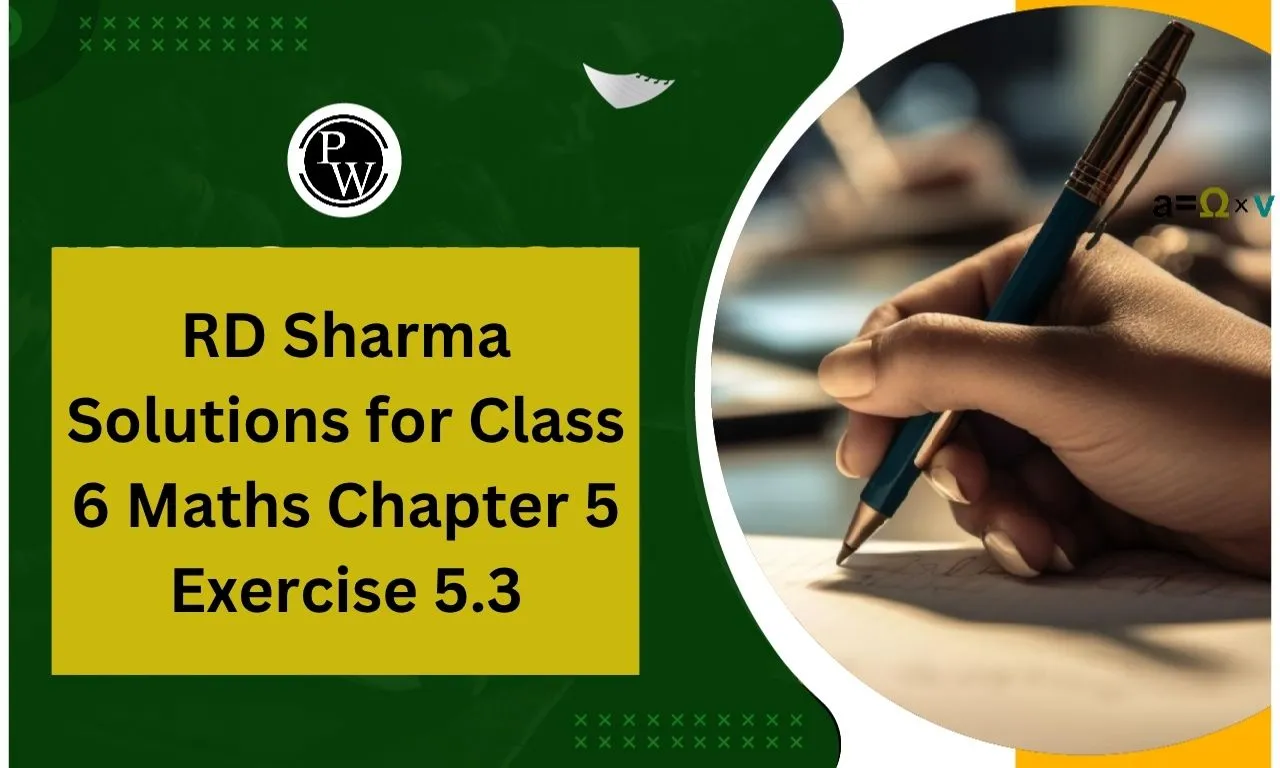
RD Sharma Solutions for Class 6 Maths Chapter 5 Exercise 5.3: RD Sharma Solutions for Class 6 Maths Chapter 5 Exercise 5.3 – Negative Numbers and Integers provide a strong conceptual foundation aligned with the latest exam pattern, CBSE Class 6 Maths syllabus, and key topics often seen in previous year papers. This exercise focuses on comparing, ordering, and understanding operations involving negative numbers.
Each solution is clearly explained to help students grasp the logic behind integer operations.
Ideal for CBSE and other state boards, these solutions aid in building accuracy and confidence. Regular practice with these problems prepares students effectively for school exams by covering concepts commonly tested in mathematics assessments.
What is Covered in Exercise 5.3?
Exercise 5.3 of Chapter 5 (Negative Numbers and Integers) in RD Sharma Class 6 Maths covers the following key concepts and skills:
1. Comparison of Integers
-
Understanding how to compare positive and negative integers.
-
Identifying which integer is greater or smaller using number line concepts.
-
Using symbols like >, <, and = correctly.
2. Ordering of Integers
-
Arranging integers in ascending or descending order.
-
Applying number line logic to order both positive and negative numbers accurately.
3. Representation on Number Line
-
Placing given integers on a number line to visualize their position.
-
Understanding that left side values are smaller, right side values are greater.
4. Application-Based Questions
-
Word problems or real-life scenarios using temperature, heights, bank balances, etc.
-
Applying the concept of integers in context.
5. Concept Reinforcement
-
Questions that test clarity of sign rules and placement of integers.
-
Helps in revising integer fundamentals that are crucial for future chapters.
RD Sharma Solutions for Class 6 Chapter 5 Negative Numbers and Integers Exercise 5.3
Below are the RD Sharma Solutions for Class 6 Chapter 5 – Negative Numbers and Integers, Exercise 5.3. These step-by-step solutions help students understand concepts clearly and prepare effectively for exams based on the latest CBSE syllabus.
1. Find the additive inverse of each of the following integers:
(i) 52
(ii) – 176
(iii) 0
(iv) 1
Solution:
(i) The additive inverse of 52 is – 52.
(ii) The additive inverse of – 176 is 176.
(iii) The additive inverse of 0 is 0.
(iv) The additive inverse of 1 is – 1.
2. Find the successor of each of the following integers:
(i) – 42
(ii) -1
(iii) 0
(iv) – 200
(v) -99
Solution:
(i) The successor of – 42 is
– 42 + 1 = – 41
(ii) The successor of – 1 is
-1 + 1 = 0
(iii) The successor of 0 is
0 + 1 = 1
(iv) The successor of – 200 is
-200 + 1 = – 199
(v) The successor of – 99 is
– 99 + 1 = – 98
3. Find the predecessor of each of the following integers:
(i) 0
(ii) 1
(iii) – 1
(iv) – 125
(v) 1000
Solution:
(i) The predecessor of 0 is
0 – 1 = – 1
(ii) The predecessor of 1 is
1 – 1 = 0
(iii) The predecessor of -1 is
-1 – 1 = -2
(iv) The predecessor of – 125 is
-125 – 1 = – 126
(v) The predecessor of 1000 is
1000 – 1 = 999
4. Which of the following statements are true?
(i) The sum of a number and its opposite is zero.
(ii) The sum of two negative integers is a positive integer.
(iii) The sum of a negative integer and a positive integer is always a negative integer.
(iv) The successor of – 1 is 1.
(v) The sum of three different integers can never be zero.
Solution:
(i) True. 1 – 1 = 0
(ii) False. -1 – 1 = -2
(iii) False. – 2 + 3 = 1
(iv) False. The successor of – 1 is 0.
(v) False. 1 + 2 – 3 = 0
5. Write all integers whose absolute values are less than 5.
Solution:
The integers whose absolute values are less than 5 are
-4, – 3, – 2, – 1, 0, 1, 2, 3, 4
6. Which of the following is false:
(i) |4 + 2| = |4| + |2|
(ii) |2 – 4| = |2| + |4|
(iii) |4 – 2| = |4| – |2|
(iv) |(-2) + (-4)| = |-2| + |-4|
Solution:
(i) True.
(ii) False.
(iii) True.
(iv) True.
7. Complete the following table:
From the above table:
(i) Write all the pairs of integers whose sum is 0.
(ii) Is (-4) + (-2) = (-2) + (-4)?
(iii) Is 0 + (-6) = -6?
Solution:
(i) The pairs of integers whose sum is 0 are
(6, -6), (4, – 4), (2, – 2), (0, 0)
(ii) Yes. By using commutativity of addition (-4) + (-2) = (-2) + (-4)
(iii) Yes. By using additive identity 0 + (-6) = -6.
8. Find an integer x such that
(i) x + 1 = 0
(ii) x + 5 = 0
(iii) – 3 + x = 0
(iv) x + (-8) = 0
(v) 7 + x = 0
(vi) x + 0 = 0
Solution:
(i) x + 1 = 0
Subtracting 1 on both sides
x + 1 – 1 = 0 – 1
We get
x = -1
(ii) x + 5 = 0
By subtracting 5 on both sides
x + 5 – 5 = 0 – 5
So we get
x = -5
(iii) – 3 + x = 0
By adding 3 on both sides
-3 + x + 3 = 0 + 3
So we get
x = 3
(iv) x + (-8) = 0
By adding 8 on both sides
x – 8 + 8 = 0 + 8
So we get
x = 8
(v) 7 + x = 0
By subtracting 7 on both sides
7 + x – 7 = 0 – 7
So we get
x = – 7
(vi) x + 0 = 0
So we get
x = 0
RD Sharma Solutions for Class 6 Maths Chapter 5 Exercise 5.3 PDF Download
RD Sharma Solutions for Class 6 Maths Chapter 5 Exercise 5.3 PDF Download is available below for students looking to strengthen their understanding of negative numbers and integers.
These solutions are prepared according to the latest exam pattern and syllabus, helping students tackle questions confidently. Whether revising concepts or practicing for exams, this PDF offers step-by-step solutions to all questions in Exercise 5.3.
Download the PDF below to access accurate and easy-to-understand explanations for every problem in this exercise.
RD Sharma Class 6 Maths Chapter 5 Exercise 5.3
Study without using the internet
Benefits of Using RD Sharma Solutions for Class 6 Maths Chapter 5 Exercise 5.3
Below we have provided the benefits of using Exercise 5.3 of Chapter 5 (Negative Numbers and Integers) in RD Sharma Class 6 Maths -
1. Concept Clarity on Integers
-
Detailed explanations help students clearly understand negative and positive integers, their comparison, and number line placement.
2. Aligned with Exam Pattern
-
Solutions follow the latest CBSE exam pattern and are useful for scoring well in school tests and unit exams.
3. Time-Saving for Revision
-
Step-by-step answers help students revise quickly without confusion, especially before exams.
4. Improves Problem-Solving Speed
-
Regular practice with these structured solutions sharpens speed and accuracy in handling integers.
5. Supports Self-Learning
-
Designed in a student-friendly manner, these solutions encourage independent learning and boost confidence.
6. Useful for Olympiads and Competitive Exams
-
Builds a strong base for future topics in maths and enhances logical reasoning—useful for Olympiads and other entrance exams.
RD Sharma Class 6 Maths Chapter 5 Exercise 5.3 FAQs
What is the main focus of Exercise 5.3?
Are negative numbers included in this exercise?
Are these solutions useful for exam preparation?
Do these solutions explain the concept of subtracting negative integers?

